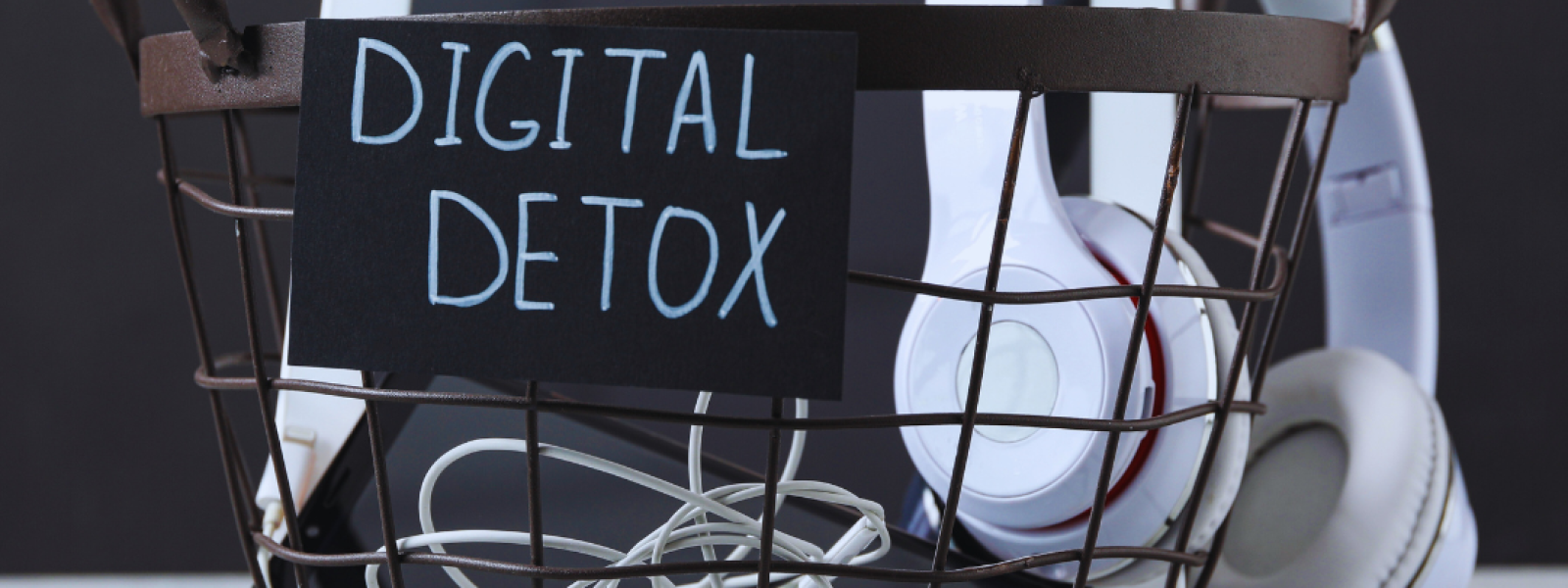In today’s hyper-connected world, constant exposure to screens can significantly impact mental and physical health. A digital detox allows individuals to reconnect with their surroundings, reduce stress, and enhance their overall wellbeing. Taking a break from technology can lead to improved focus, better sleep patterns, and more meaningful interactions with others.
Many people find themselves overwhelmed by the endless stream of notifications and updates. This relentless digital engagement often leads to feelings of anxiety and fatigue. By stepping back and embracing a period of disconnection, one can reclaim time for self-care and reflection, fostering a healthier lifestyle.
The benefits of a digital detox extend beyond momentary relief from digital distractions. It presents an opportunity to cultivate healthier habits, such as spending quality time outdoors, reading, or pursuing hobbies that may have been overshadowed by screen time. Embracing this change can ultimately lead to a more balanced, fulfilling life.
Understanding Digital Detox
Digital detoxing is essential for fostering healthier relationships with both technology and the people in one’s life. A focused approach can mitigate the adverse effects of excessive screen time and help reconnect with reality.
The Importance of Disconnecting
Disconnecting from technology allows individuals to recharge both mentally and emotionally. Continuous interaction with smartphones and other devices can lead to feelings of anxiety and isolation.
Taking breaks helps reduce stress levels and promotes mindfulness. Users often find that stepping away from social media creates space for deeper connections with friends and family. In addition, disconnecting periodically encourages engagement in activities that promote physical well-being, such as exercise and outdoor pursuits.
Research indicates that limiting screen time can enhance sleep quality. By prioritising unplugged time, individuals often experience improved focus and productivity in their daily tasks.
Defining a Healthy Relationship with Technology
Establishing a healthy relationship with technology involves recognising its role without letting it dominate daily life. Technology can enhance communication, yet excessive use may harm personal relationships.
It’s important to set boundaries concerning tech device usage. This might include specific periods during the day when screens are put away, fostering in-person interactions instead. Regularly evaluating one’s screen time can highlight patterns that require adjustment.
Encouraging tech-free zones, such as at the dining table, also promotes better engagement with those present. Mindful consumption of technology fosters awareness of its impact on mental health, allowing individuals to enjoy its benefits without sacrificing well-being.
The Health Benefits of a Digital Detox
Taking time away from digital devices can significantly enhance both mental and physical health. By breaking free from constant screen time, individuals can experience improvements in their overall well-being, which encompasses emotional stability, physical activity, and better sleep.
Improving Mental Health and Well-being
Reducing screen time can lead to notable improvements in mental health. Digital overload often contributes to heightened anxiety and depression. By disconnecting, individuals can better manage these feelings, experiencing reduced stress and increased clarity of thought.
Engaging in offline activities promotes interaction with nature and social connections. These experiences can foster an improved sense of belonging and emotional fulfilment. Additionally, decreasing exposure to social media can mitigate feelings of inadequacy that often arise from constant comparison with others. This boosts the quality of life.
Enhancing Physical Health and Activity Levels
A digital detox encourages individuals to engage in physical activities that they may otherwise neglect. Prolonged screen time often leads to a sedentary lifestyle, contributing to weight gain and physical discomfort.
By stepping away from devices, he or she may explore options such as cycling, hiking, or group sports. These activities not only increase physical health but also improve cardiovascular fitness and overall vitality. Regular physical engagement can also assist in reducing stress levels, thereby creating a positive feedback loop for mental well-being.
Boosting Sleep Quality and Reducing Eye Strain
Many individuals suffer from sleep problems related to excessive screen usage before bedtime. The blue light emitted by screens can disrupt circadian rhythms, making it challenging to fall asleep. A digital detox can improve sleep quality by allowing the body to reset these natural rhythms.
Furthermore, taking regular breaks from screens can alleviate eye strain, a common issue among heavy device users. Symptoms include dry eyes and headaches, which can adversely affect daily life. By prioritising offline activities, individuals can significantly reduce these discomforts, promoting both better rest and clearer vision.
Practical Strategies for Implementing a Digital Detox
To successfully implement a digital detox, individuals must establish clear goals and boundaries, engage in alternative activities, and seek support from their community. These strategies can help reduce distractions, improve focus, and foster a healthier relationship with technology.
Setting Realistic Goals and Boundaries
Setting specific and achievable goals is crucial for a successful digital detox. Individuals should define what aspects of their digital lives they want to change, such as limiting social media usage or reducing screen time before bed. Boundaries should be clearly articulated, including designated “do not disturb” times.
For example, one could aim to check notifications only three times a day. By tracking progress, individuals maintain motivation and accountability. It is important to adjust goals as needed to remain realistic and achievable, which helps to minimise feelings of frustration or low self-esteem.
Embracing Alternative Activities and Hobbies
To replace the time spent on devices, individuals should explore new hobbies or revisit old ones. Engaging in physical activities can significantly improve mental health and self-care. Options such as hiking, reading, or joining a local sports club encourage disconnecting from screens.
Creating a daily schedule that incorporates these activities can improve time management. This not only breaks the cycle of constant distraction but also boosts productivity. Individuals may also find joy in creative pursuits such as painting or gardening, which can enhance focus and provide a satisfying sense of accomplishment.
Seeking Support and Encouragement
Having a robust support system can facilitate a successful digital detox. Friends and family can provide encouragement and hold each other accountable. Joining support groups or online communities focused on similar goals can also enhance motivation.
Sharing progress through group challenges or discussions can cultivate a sense of camaraderie. This shared journey helps to combat feelings of isolation often tied to social comparison. Ultimately, seeking support reinforces personal goals and fosters resilience against the urge to revert to old digital habits.
Impact on Relationships and Self-Perception
Digital detoxification can significantly influence how individuals perceive themselves and engage with others. By stepping back from screens, one can improve personal relationships and develop a healthier self-image.
Navigating Social Interactions Without Social Media
Social media often dictates how people interact and maintain their relationships. Without the constant stream of notifications and curated updates, individuals can focus more on face-to-face interactions. This shift allows for deeper conversations and genuine connections.
FOMO (fear of missing out) can diminish when one is not consumed by an online presence. People can appreciate the moments they spend together without distractions. As they engage authentically, relationships can become more meaningful and fulfilling.
Parties, gatherings, and even casual meet-ups can regain their significance. Without the interference of technology, individuals can foster stronger bonds. Ultimately, this results in healthier relationships built on real experiences rather than virtual interactions.
Rebuilding Confidence and Self-Image
Excessive smartphone use can distort self-image. Constant comparisons on social media may lead individuals to feel inadequate or less accomplished. By taking a break from these platforms, one can regain a clearer perspective.
A tech detox allows individuals to focus on their strengths and qualities rather than their online persona. Engaging in activities like reading or sports can boost confidence and promote a more positive self-view. Individuals often discover new passions during this time, which enhances their sense of self-worth.
Moreover, reducing unhealthy eating habits often associated with mindless technology use can improve overall well-being. Feeling better physically can translate to improved self-esteem. This process nurtures a healthier relationship with oneself, ultimately leading to a more balanced and positive outlook on life.




